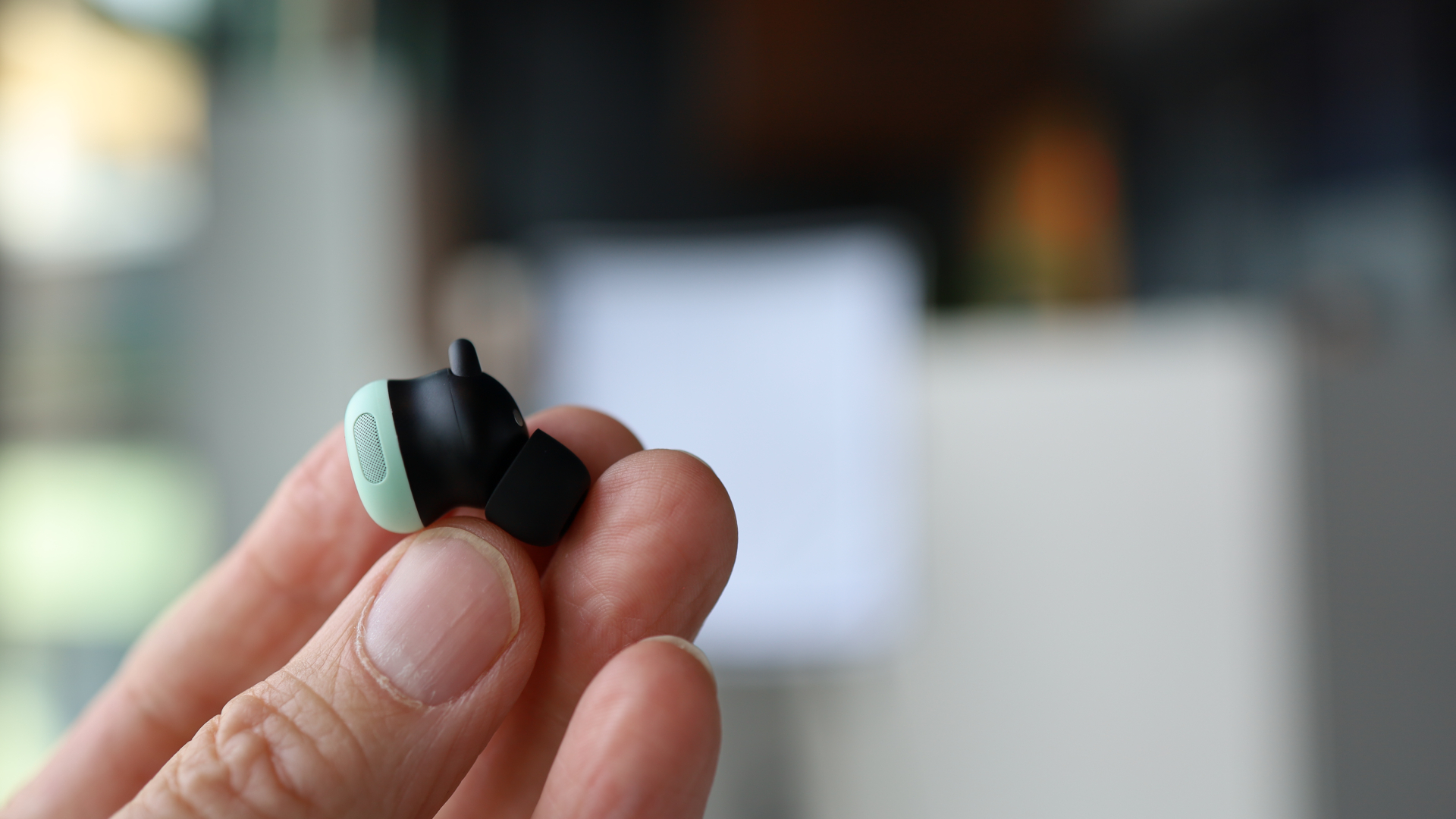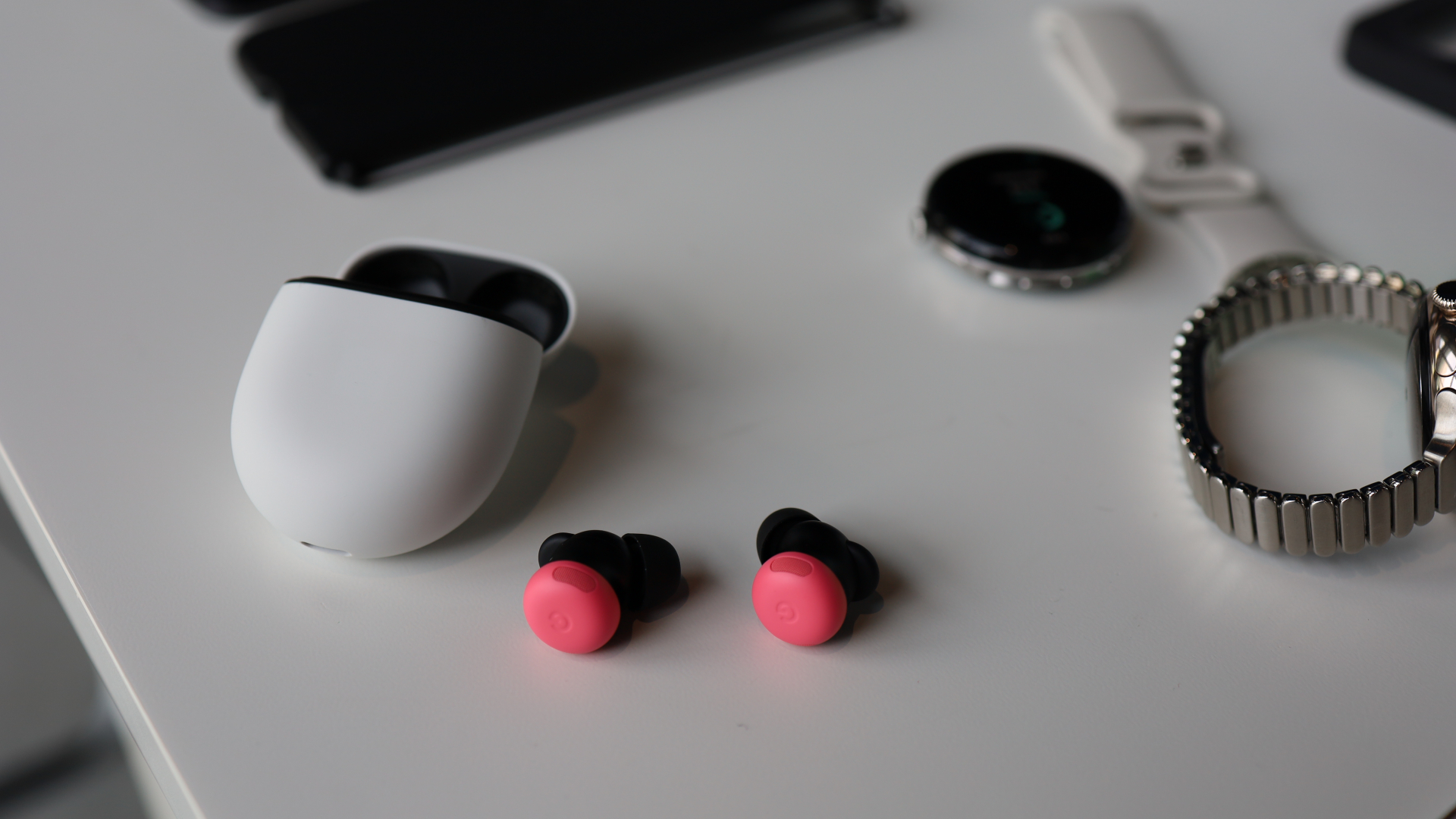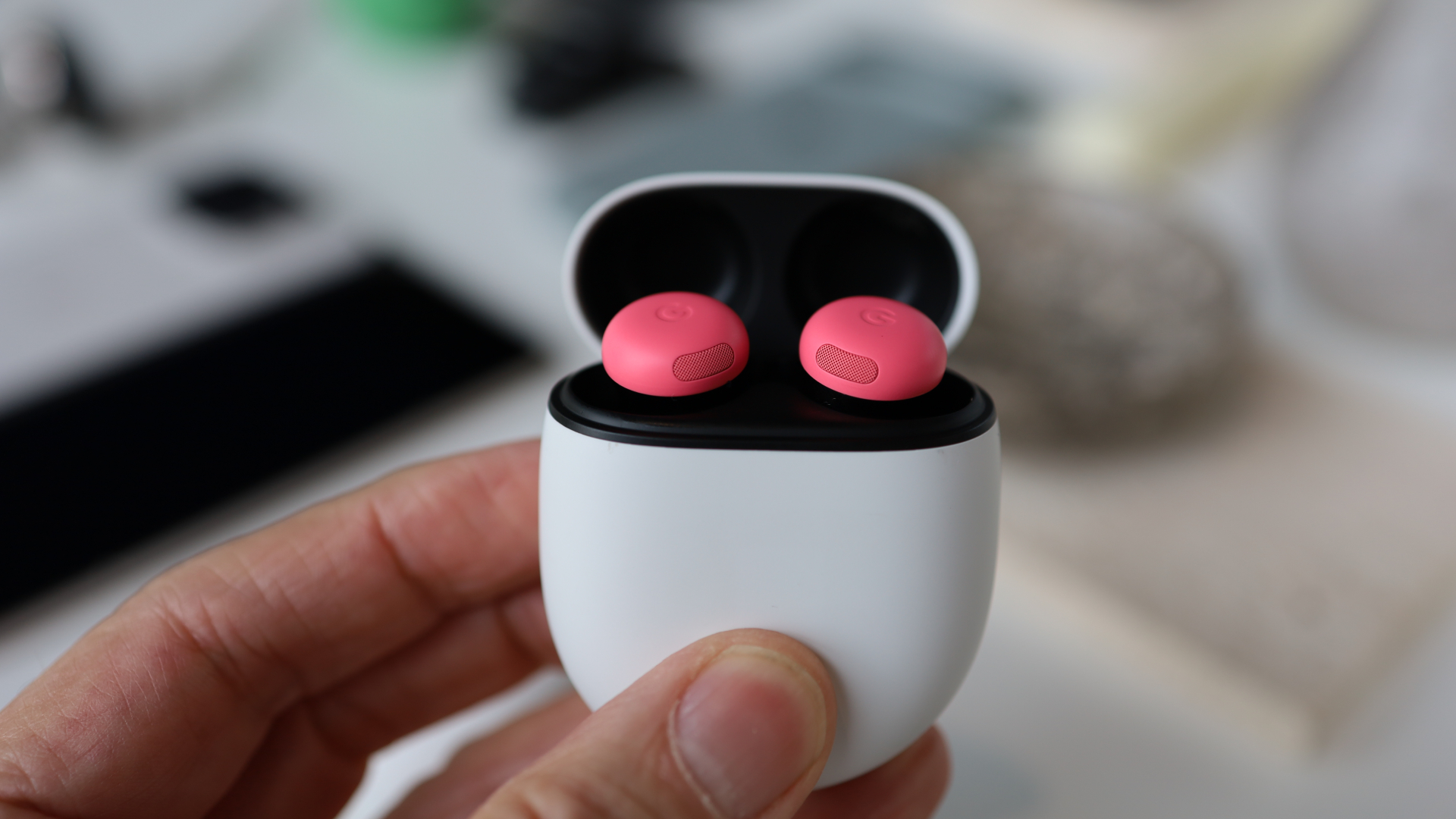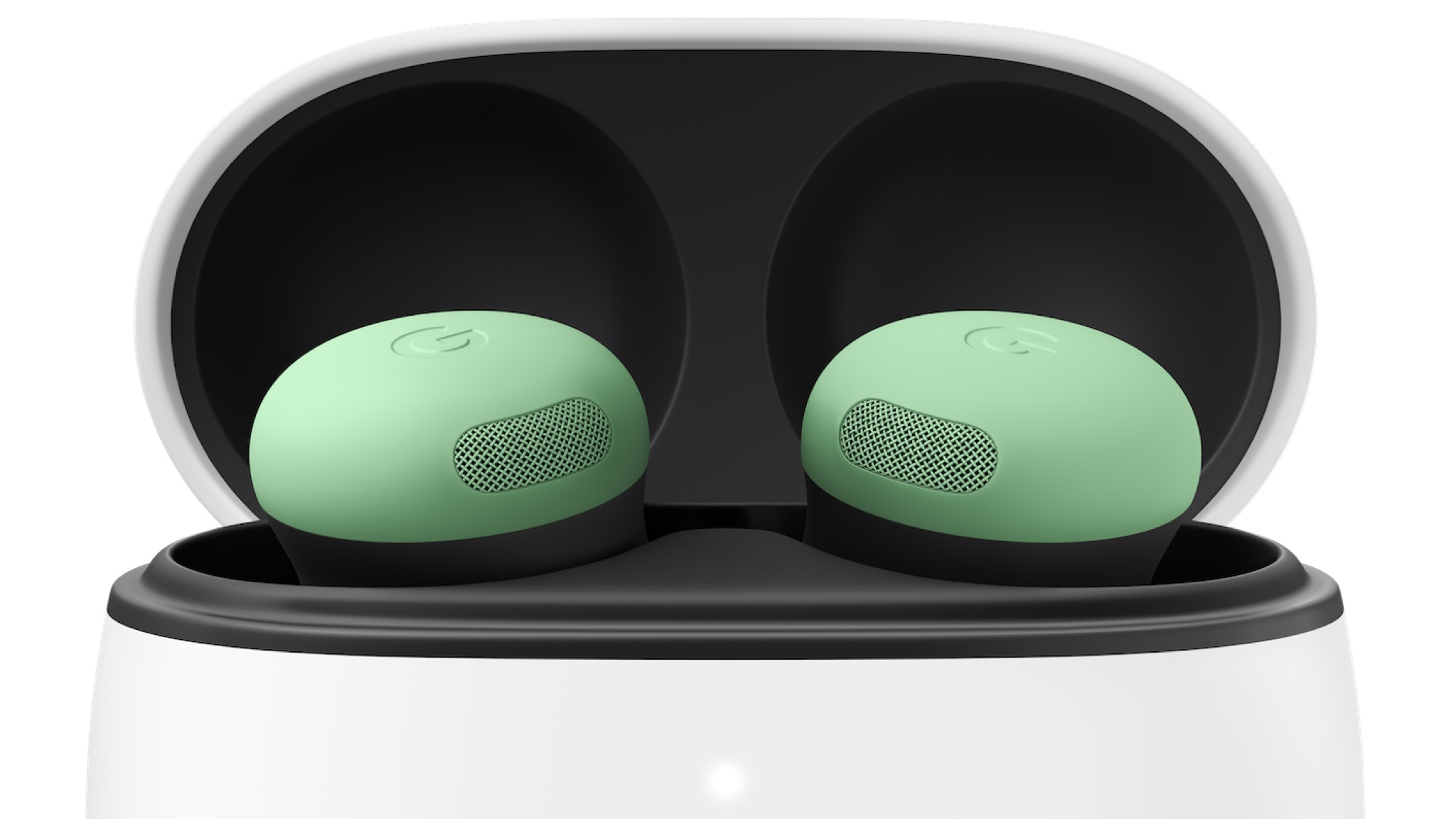3 ways the Google Pixel Buds Pro 2 launch impressed (and one way it didn't)
There's so much to enjoy on paper – with one catch

Huge news in audio circles, friends: Google has used its Made by Google event (on August 13, 10am PT / 1pm ET / 6pm BST, or August 14 at 3am AEST) to launch the Google Pixel Buds Pro 2, the company's hotly-anticipated update on the inaugural 2022 Google Pixel Buds Pro.
And there are a lot of upgrades – after all, two years is kind of a long time when it comes to iterations of some of the best earbuds. What are the key bits of info you need, in bite-size form? I got you. Keep reading for the Pixel Buds Pro 2's three big perks, plus the one (slightly) disappointing figure on the spec sheet.
Want to (re)watch the big shindig? Our how to watch the Google Pixel 9 launch event info is the place to go – and be sure to have our Made by Google live blog on your device too, for our in-depth analysis as the events unfold.

1. Small is beautiful
The fit has changed, and this is a very welcome overhaul indeed. They're now 27% smaller and just 4.7 g per bud (making them a potential option for inclusion in our best earbuds for smaller ears guide) and have a new "twist-to-adjust stabilizer" to keep them in your auricles. Also, four tips are now offered, rather than three, to achieve a good seal.
As I wrote in my 2022 Google Pixel Buds Pro review: "I downsize eartips (three in total are provided) but struggle to get the Google Pixel Buds Pro to fit securely. The shape is a bit like a tiny flip-top backpack or knapsack, and it doesn't feel particularly well-weighted or ergonomic, although the neck of the buds is nicely slanted to angle into your ear canals… Despite my best efforts, that 'ah, now they're secure' moment alludes me".
So, this has changed now – hurrah!

2. Better connectivity
Your Bluetooth version in the Pixel Buds Pro 2 is now 5.4 (up from lowly old 5.0) with LE (or Low Energy) Audio. This is excellent because according to the experts at the Bluetooth Special Interest Group network, it opens the door to “improved audio quality, reduced power consumption and improved interoperability.”
Get daily insight, inspiration and deals in your inbox
Sign up for breaking news, reviews, opinion, top tech deals, and more.
What does that last point mean? Auracast audio sharing is one example, but rocking the latest Bluetooth version in your earbuds also helps to improve the wireless range from your source device, support for improved bitrates, better battery life (the clue's in the name), and lower latency.

3. The sound of silence – doubled
You now get a custom-designed 11 mm dynamic speaker driver in each bud (which is big), plus active noise cancellation with something Google calls "Silent Seal 2.0".
In addition to a transparency mode, active in-ear pressure relief and a new Conversation Detection feature (that knows when you're talking and switches automatically to transparency mode; when you're done chatting it goes back to ANC mode) the bold claim is that the Buds Pro 2 can "cancel twice as much noise". Yes, that much!
It's all thanks to the Tensor A1 chip nestled in the Pixel Buds Pro 2. It's the first Tensor chip to power any set of earbuds, and it apparently processes audio 90 times faster than the speed of sound – which allows that Active Noise Cancellation with Silent Seal 2.0 to adapt to your environment (and nix that pesky background noise) up to 3 million times per second.
@techradar ♬ original sound - TechRadar
…And the downside?
All of that ANC comes at a cost to the stamina – albeit a small one.
To clarify, Google tells us that with ANC on, you'll get up to eight hours of listening time from the Buds before they need a charge, and up to 30 hours of total listening time with the charging case.
Now, it's not bad (especially when you consider that with ANC off, you'll nab up to 12 hours of listening time, and up to 48 hours of total listening time including the charging case), but this particular area is a highly competitive and important one. And simply put, this quoted battery life is just not as impressive as we might have hoped.
We called the OnePlus Buds 3's battery life "middling" at 10 hours (buds) and 44 hours (case), so you can see how we expect more in 2024.
Take the older set: with ANC off, you got up to 11 hours of listening time from the buds, and up to 31 hours total listening time with the charging case. With active noise cancellation on, you could get up to seven hours of earbuds listening time and up to 20 hours of total listening time with the charging case. So, there is an improvement. But in two years, it's not a huge one.
Take the latest Cambridge Audio Melomania M100. Here, you get 10 hours from the buds, or 33 hours with the case, with ANC on – but switch ANC off and it jumps to 16 hours from the buds, or a whopping 52 hours including the case.
So, it's a case of OK (rather than oh yay) here… Obviously when we've heard them and can write our full, in-depth, no-holds-barred review, we'll be letting you know how they sound. For now, you're all caught up on how they stack up before any of our tests.
You may also like
- See our pick of the best earbuds around
- Need a source device that's not your phone? Check out our roundup of the best hi-res audio players on the market
- Know your FLAC from your ALAC and get into hi-res with our audio file format explainer

Becky became Audio Editor at TechRadar in 2024, but joined the team in 2022 as Senior Staff Writer, focusing on all things hi-fi. Before this, she spent three years at What Hi-Fi? testing and reviewing everything from wallet-friendly wireless earbuds to huge high-end sound systems. Prior to gaining her MA in Journalism in 2018, Becky freelanced as an arts critic alongside a 22-year career as a professional dancer and aerialist – any love of dance starts with a love of music. Becky has previously contributed to Stuff, FourFourTwo and The Stage. When not writing, she can still be found throwing shapes in a dance studio, these days with varying degrees of success.